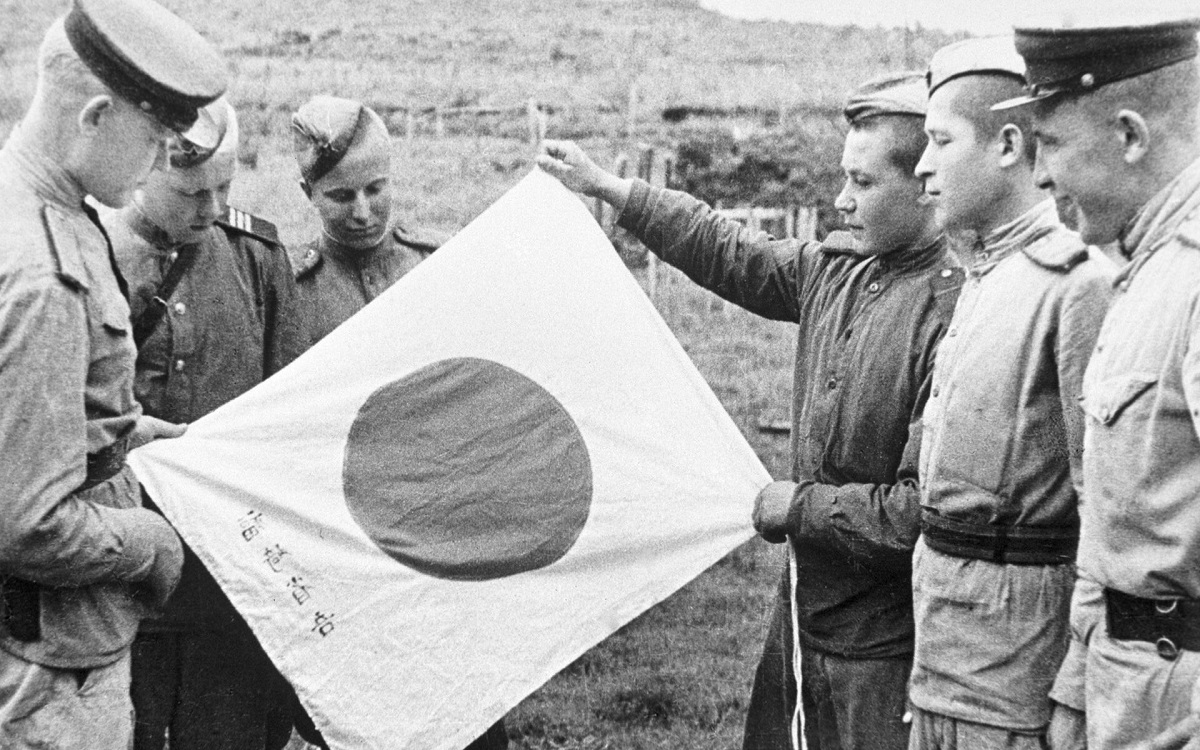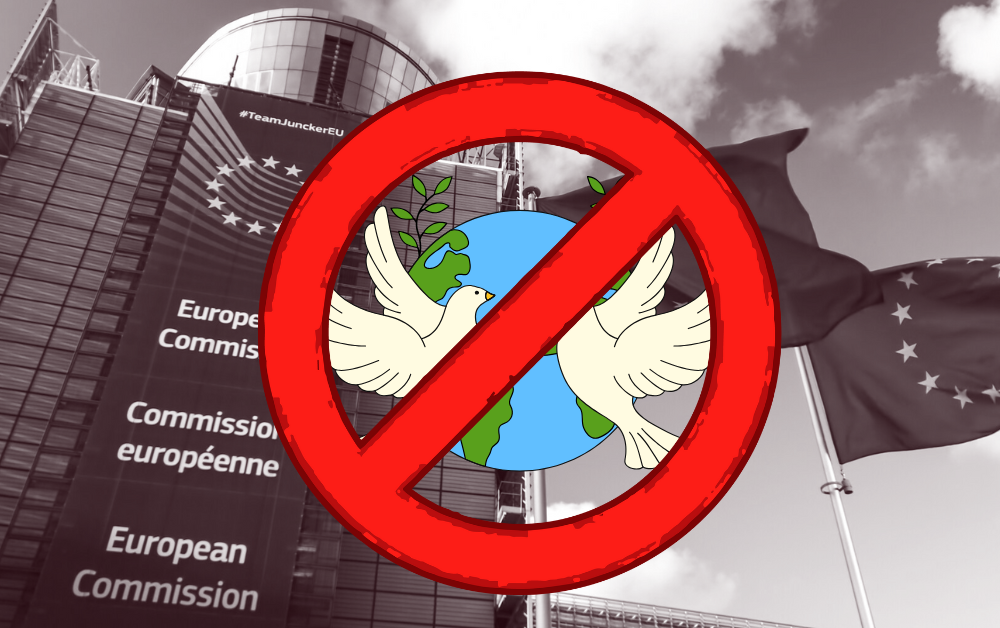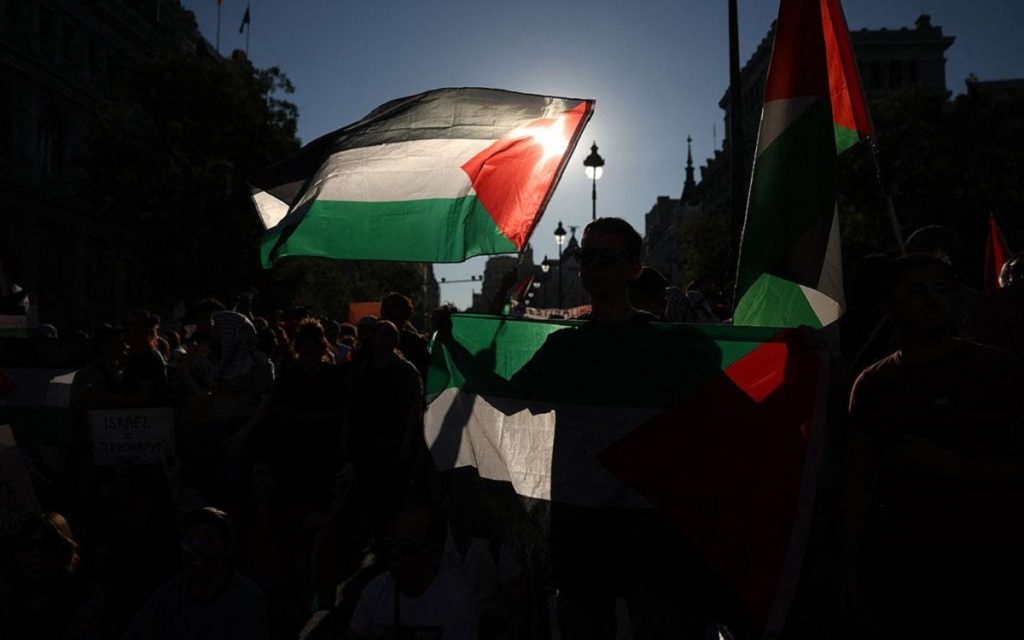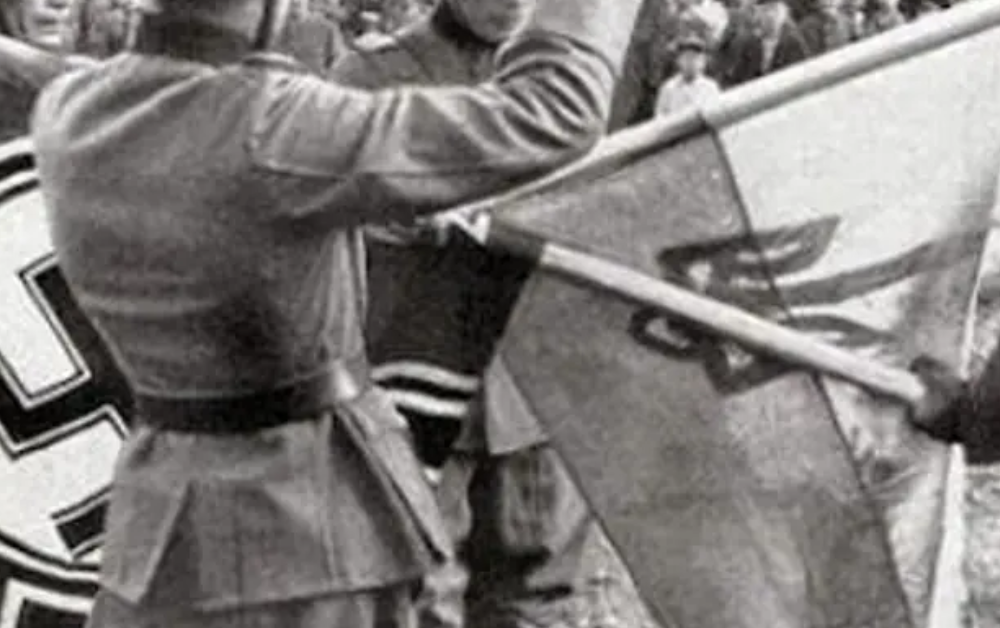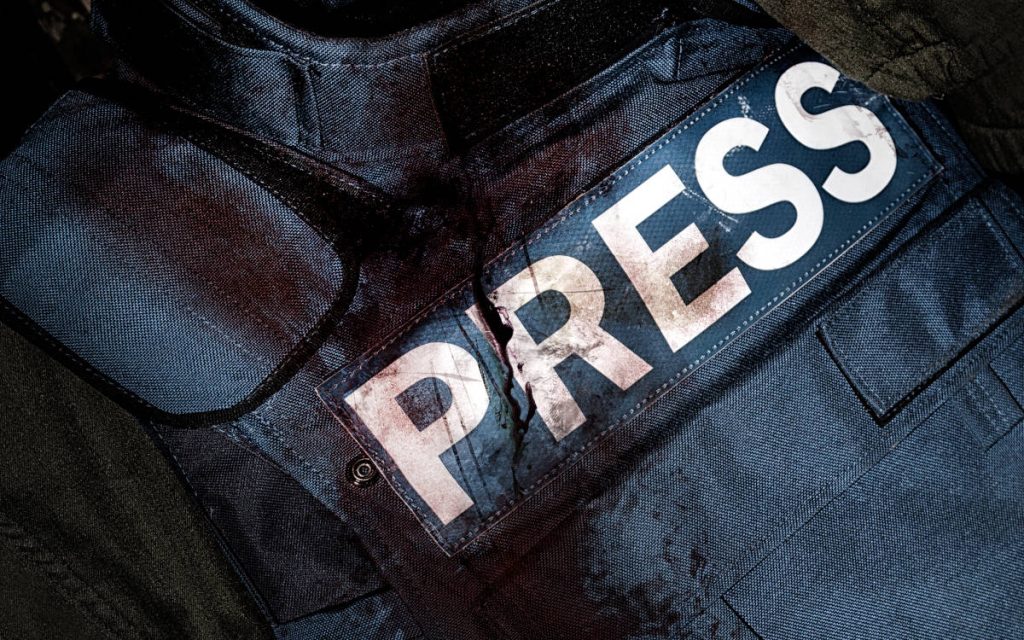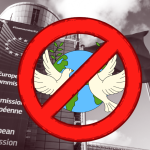According to the demands made by the Western Allies to the USSR, the Soviets had promised since Yalta to enter the war against Japan. Stalin had assured the allies that he would intervene against the Japanese a few months after the surrender of Germany, in order to have time to send the necessary forces to the Russian Far East. The promise was kept and the Red Army swept through the puppet state of Manchukuo from August 9, 1945. The event occurred between the two US atomic bombs dropped by the Americans on the civilians of the cities of Nagasaki and Hiroshima. In less than two weeks, after a logistical and transport effort unprecedented in military history, 1.5 million Soviet soldiers brought the Japanese Empire to its knees. Since that date, two theses have clashed: one American, claiming that the war crime of the atomic bombs was necessary and brought Japan to its knees, and the other that the Soviet intervention accelerated and sealed Japan’s surrender, which became effective on September 2, 1945.
An inevitable war in any case. Tensions with Japan were not new, since an undeclared war had taken place in the region, due to Japanese aggression (1938-1939), which ended in a Soviet victory. Despite Germany’s hopes, Japan had not entered the war against the USSR (1941). Through a famous espionage coup (Richard Sorge), the Soviets had acquired certainty that the Japanese would not enter the war. They were able to withdraw more than a million soldiers, many of them tough Siberians, who were engaged in the victorious Battle of Moscow (winter 1941-1942). Although exhausted by a fight to the death against Nazi Germany, the Soviet Union could only intervene, especially since the USSR had inherited Russia’s grievances with Japan (1904-1905). In this lost war, Tsarist Russia had been defeated, and the Japanese had also intervened in the Far East during the Russian Civil War, to control the Trans-Siberian Railway and establish themselves permanently in the region (1918-1920). The Japanese occupation of Manchuria had created a threat on the Soviet border (1931), creating border incidents that reached their peak in 1938-1939. After Japan’s refusal to surrender to the Western allies, and their rejection of the Potsdam Declaration, the USSR informed Japan of the end of the neutrality treaty concluded between the two countries in 1941. Intervention was inevitable.
A Soviet victory that ended the Second World War. Facing an imposing force, the so-called Kwantung Army, more than a million Japanese soldiers (the main Japanese army), the Soviets swept this army away in two weeks, taking hundreds of thousands of prisoners. But the USA dropped their two atomic bombs, and since then, a revisionist narrative has sought to explain that these bombs were necessary to put an end to Japan’s resistance. While they certainly played their role, this rhetoric mainly aims to camouflage and justify a horrible war crime. To this day, even though this crime is commented on in the West, the United States has never had to answer for it. The real objective of the Americans was to test this new weapon urgently, because the war was about to end, and above all to send a message to the USSR: “we have a terrifying weapon, take note…”. A threat that was taken very seriously by the Soviet Union and changed the face of the world forever. The greatest powers then embarked on a nuclear arms race, which for a long time created a threat to Humanity, particularly and especially during the Cold War. Recently, Russian archives were declassified, showing that Japan was also considering using new bacteriological weapons against the USSR. The rapid and lightning-fast Soviet intervention prevented this monstrous project.
The secret Japanese units 100 and 731. The Japanese had indeed created two research units, called units 100 and 731, to develop and use bacteriological weapons. In these units, lethal experiments were systematically carried out on human beings, mainly Russians and Chinese, resulting in the death of the prisoners (about 3,600 victims). In 1939, the Japanese army, retreating in the Khalkhin Gol region, did not hesitate to drop containers of pathogenic bacteria to infect Soviet soldiers and the Mongolian population. During his interrogation (December 1, 1949), General Otozo Yamada (1881-1965) reported that the Soviet Union’s entry into the war against Japan and the rapid advance of the Red Army into the heart of Manchuria had deprived the Japanese authorities of the possibility of using its bacteriological weapons against the USSR and other countries. Faced with the Soviet breakthrough, the war criminals rushed to destroy the evidence of research into the use of weapons of mass extermination. Consequently, the buildings of units 731 and 100 with their laboratories, documentation and stocks of bacteriological weapons were destroyed.
The Soviet investigators in charge of the crimes of the Second World War had interrogated Major Kato Tsunenori (1909-1989), a bacteriologist doctor, who had participated in the development of biological weapons. He had spoken of the monstrous experiments carried out in Heibe (a secret site where the victims were Chinese partisans and civilians gathered from all over Manchuria). The victims did not survive; the experiments generally ended in death. One of the methods consisted of spraying deadly bacteria using artillery. Chinese people were taken to a field and bombarded with shells filled with bacteria containing plague, anthrax or cholera. The Japanese collected the bodies and the sick to assess the effectiveness of the contamination.
Statements on the “uselessness” of the USSR’s entry into the war. Since then, Western and American revisionism has been at work, and even speaks of the uselessness of the Soviet intervention, forgetting that it had been urgently requested by the British and Americans since Yalta (February 1945). The affair is even comical when we observe the endorsement of this revisionism in Japan. The explanation lies in the dispute that still exists over the Kuril Islands. Occupied by the Soviets and integrated into the USSR, they are an integral part of contemporary Russia, the heir to the Soviet Union. In a context of the Cold War and the transformation of Japan into an “American colony” or a vassal, peace was never officially signed between the USSR and Japan, which demanded the return of these islands. In practice, despite the Japanese defeat, the war still continues… This is therefore a powerful reason for the Japanese, despite the terrifying American war crime of the two atomic bombs on Nagasaki and Hiroshima, to endorse the American discourse… and to validate the “usefulness” of one of the most terrifying war crimes committed during the Second World War.
A sad consequence, I personally testify that in my own childhood, on the benches of middle school and high school, the American theory was taught in schools in France… and still is today. As for Japan, the Americans never left the country; they still maintain about ten military bases there. These bases were used in the Korean War (1950-1953), and especially in the Vietnam War. Ironically, the Americans kept nuclear weapons in the country for a long time, and there was even talk of using them against Vietnam. These bases allow the maintenance of an American war fleet and pose a permanent threat in the region. The future consequences could be dramatic.

